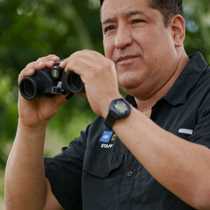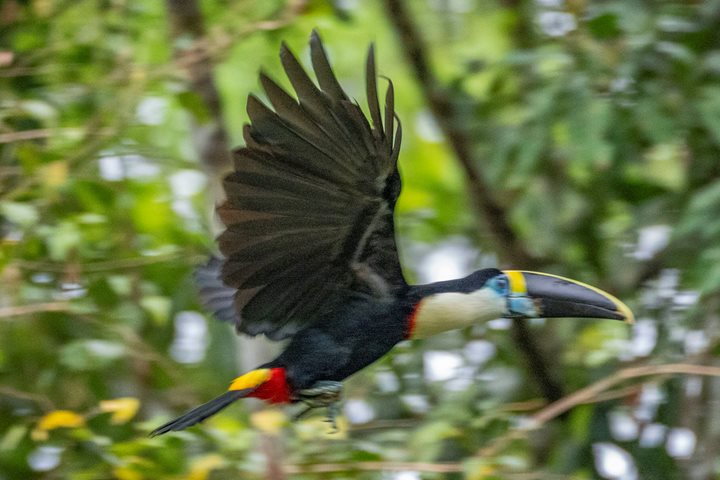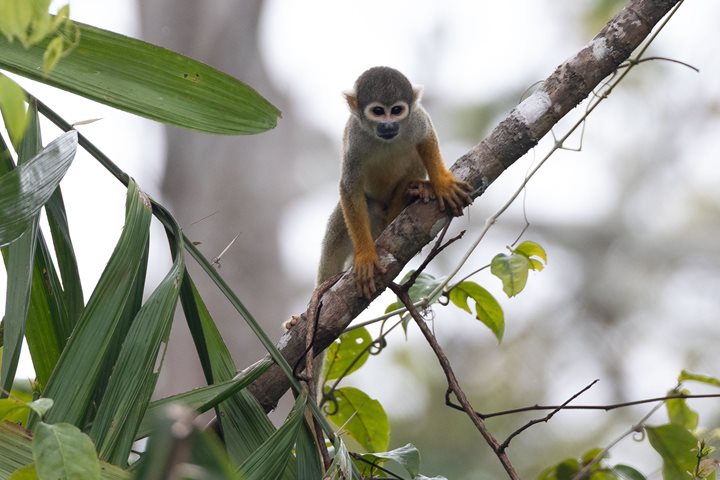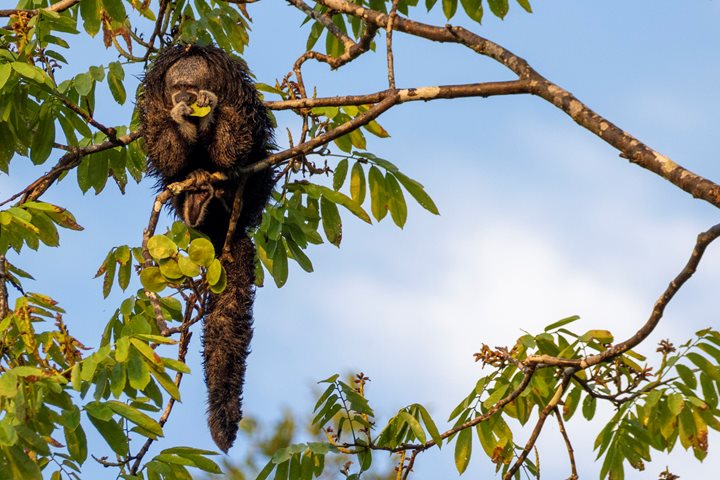Early in the morning we headed to the Pacaya River. We had a sunny day that contrasted with the cold afternoon we had yesterday. Air temperature was still cool, therefore the breeze felt wonderful mixed with the early sunrays.
The Pacaya River is a fairly large river that constitutes one of the main ones in the Pacaya-Samiria Reserve. The reserve is one of the largest and most important governmentally protected areas in Peru. It covers more than 5 million acres (7,700 ml², 20,800 km²) which is equivalent in size to the state of New Jersey. This reserve is also the largest protected seasonal flooded forest in South America. The reserve is made up of three hydrographical basins: the Samiria River drainage, the Pacaya River drainage, and the Yanayacu-Pucate drainage. Today we are visiting Pacaya drainage basin.
In this area we observed many bird species like egrets, hawks, cormorants, parrots, and storks. The icing-on-the-cake was the sighting of the eminently curious and prehistoric-looking Hoatzin (Ophistocomus hoazin). This beautiful bird species is one of the most representative of the Neotropics. Its natural history occupies important sections in nature books. Just some quick facts, young hoatzins have claws to return to their nesting sites after diving into the water escaping from predators. Hoatzins are vegetarian, feeding on leaves that digest with their highly efficient and compound digestive system. In addition to the many animal species we saw we had the excitement to have our breakfast outdoors aboard the skiffs! We had our first meal of the day served in the rain forest with white gloves on the hands of or naturalists and fabric napkins included. On the way back we spotted a large spectacled caiman warming up on a riverbank. The reptile allowed us to get very close giving their observers a great photo opportunity.
In the afternoon we had a cultural sports encounter with a nearby community. We organized a soccer match Delfin II guests vs. Bretaña community kids. It was a lot of fun! They played on a small soccer field located in the Reserve Rangers Station. After the game and accompanied by a bright sun but with the cool breeze still present we went to explore the Pacaya River. We arrived to a very large lake known as Yanayacu. In this place we went swimming. The water felt wonderful. After swimming we continued exploring and our efforts were rewarded by the observation of a couple of troops of the largest monkey species of the reserve, the red howler monkey (Alouatta seniculus).
At around 6:15 p.m., with the sun setting on the horizon, we came back on board. We had a wonderful day in the remotest location in our Upper Amazon expedition this week.







